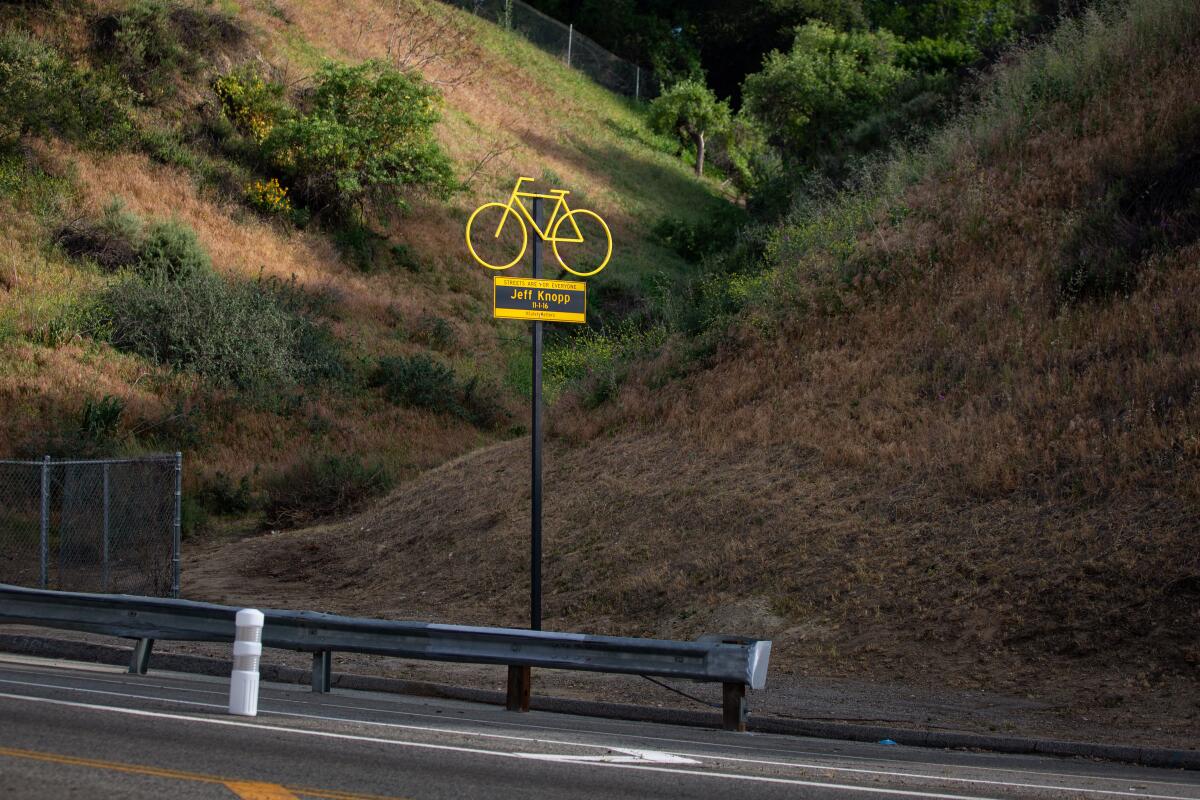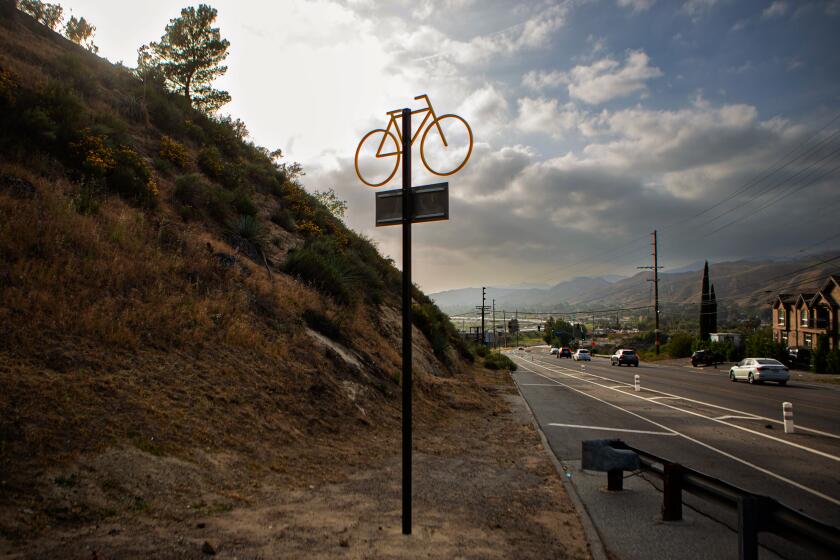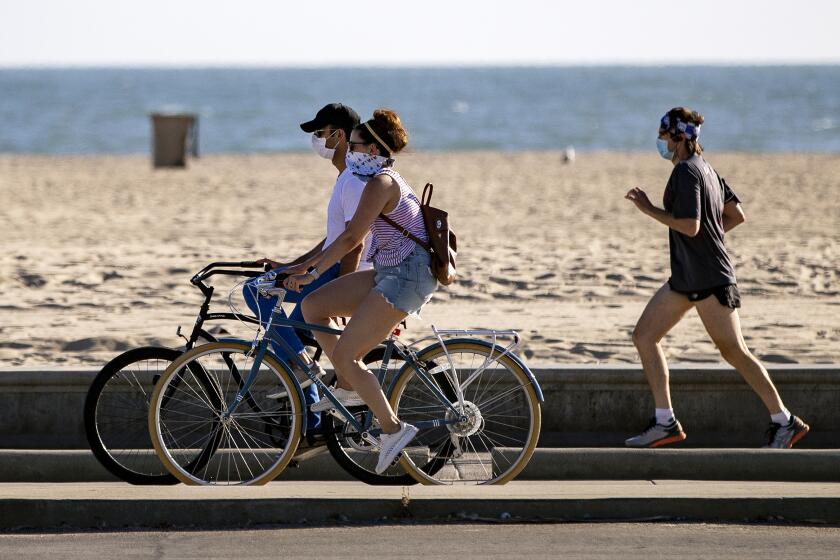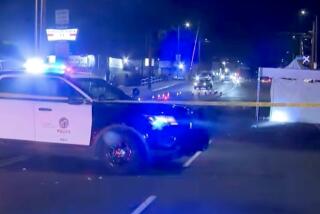This is when cycling in L.A. becomes deadly

- Share via
Lack of dedicated bike lanes, speeding cars and multi-lane roads can be a deadly mix for cyclists, according to a new report by a bicycle advocacy group in Los Angeles County.
BikeLA, formerly the Los Angeles County Bicycle Coalition, analyzed the 26 bicycle fatalities in 2022 and discovered four contributing factors in the deadly crashes: speed exceeding 35 mph, a lack of dedicated infrastructure for cyclists, multiple travel lanes on roadways, and poor street lighting.
“Our infrastructure is failing bicyclists across the city and, in fact, across the region of L.A. County,” said Eli Akira Kaufman, executive director of BikeLA.
The majority — 85% — of L.A.’s bicycle fatalities happened on roads that didn’t have dedicated bike lanes. In addition, 77% of deadly collisions involving cyclists took place on multi-lane roads, often with three or more lanes in each direction.
An advocacy group for safer streets is planning to place permanent memorials at the sites where pedestrians and cyclists have been killed.
These major multi-lane roads signify to drivers that the road is designed for them rather than for all users, the report stated.
Kaufman said the report illustrated a culture in which preferential treatment is given to vehicles over cyclists, adding that systemic change is needed to make the region safer for cyclists and pedestrians.
Other infrastructure deficiencies, such as a lack of street lighting, are also key to the deaths, with 54% of crashes taking place at night, the report found.
Particularly concerning is that these bicycle fatalities are heavily concentrated in low-income black and Latino neighborhoods, the report found.
“This shows the impact of historic disinvestment and racist policies that lead to a lack of resources resulting in the negative outcomes we experience now,” Kaufman said. “Our goal is to have this data reshape the policies that distribute resources so that these communities get to enjoy their streets safely.”
The BikeLA report also found that bicyclist deaths were concentrated along major corridors that have already been identified as places where a higher proportion of fatal and serious injuries take place.
Two cyclist fatalities happened within a quarter of a mile of the intersection of Martin Luther King Jr. Boulevard and Figueroa Street near Exposition Park and the 110 Freeway.
Also, three bicyclists died in recent years on a four-block stretch of Figueroa Street between 3rd and 7th streets, near the 110 Freeway, the report stated.
There’s a growing movement in Los Angeles and across the country calling for cities designed for people, not cars.
The report suggested several ways to address risks, including reducing speed limits, replacing automobile lanes with bicycle lanes and wider sidewalks, expanding cyclist education programs and providing cyclists with headlights.
Kaufman said better investment in infrastructure is needed, but also programming that will get Angelenos out of their cars and onto bicycles or other modes of getting around.
“You are traffic when you’re stuck in it. There are other options,” he said. “In a Mediterranean climate where we have generally good weather year-round and the majority live in the flats and don’t have to contend with hills to get from Point A to Point B, we should be a cycling mecca.”
More to Read
Sign up for Essential California
The most important California stories and recommendations in your inbox every morning.
You may occasionally receive promotional content from the Los Angeles Times.













